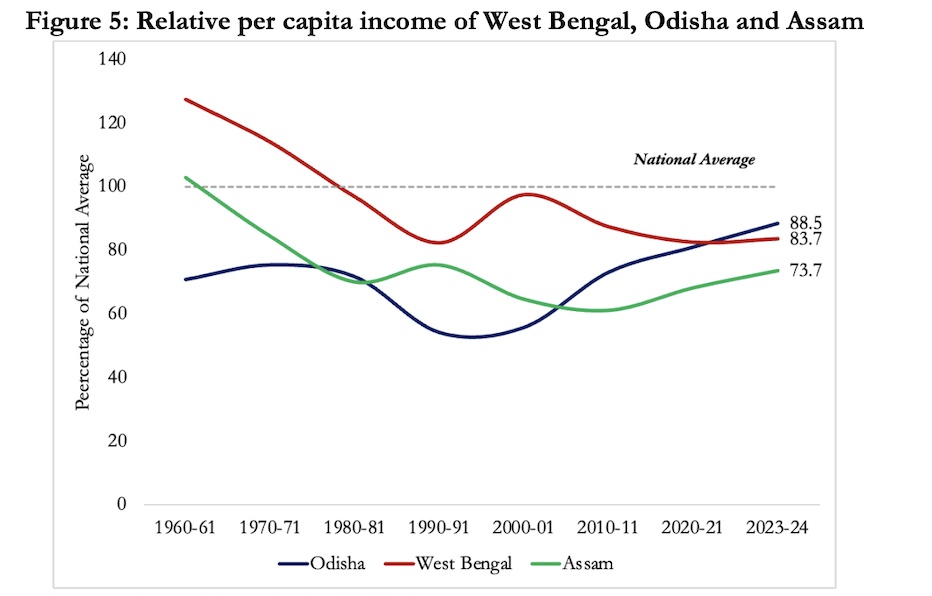Bhubaneswar: Odisha’s relative per capita income touched 88.5% of the national average in 2023-24, compared to just 54.3% in 1990-91, according to a working paper by the Economic Advisory Council to the Prime Minister (EAC-PM).
“Odisha which saw a consistent decline in terms of relative per capita income from 1960s to 1990-91 (70.9% to 54.3%), has seen a significant turnaround since then. Its relative per capita income increased from 54.3% in 1990- 91 to 88.5% in 2023-24. Although still below the national average, the progress made over the past two decades is substantial,” it said.
It further stated that Odisha overtook West Bengal, which had the third-highest per capita income in 1960-61. “West Bengal’s per capita income was above the national average in 1960-61 at 127.5%, but its growth failed to keep pace with national trends. As a result, its relative per capita income declined to 83.7% in 2023-24, falling below that of even traditionally laggard states like Rajasthan and Odisha.”

Authored by EAC-PM member Sanjeev Sanyal and Joint Director Aakanksha Arora, the paper ‘Relative Economic Performance of Indian States: 1960-61 to 2023-24’ said the development of the eastern part of the country remained a concern as Bihar with a per capita income of just 32.8% of the national average ranked as the poorest, followed by Jharkhand at 57.2% and Assam at 73.7%.
“The relative per capita income of undivided Bihar was 70.3% in 1960- 61. It started declining thereafter and bottomed out at 31% in 2000-01 for the bifurcated state of Bihar. After that, it has been roughly flat at around 33%. We understand that the actual household incomes may be higher than what is implied here as the remittances are not captured here, however the gap is still very stark.”
Performances of other states
Delhi has the highest per capita income among Indian states, scoring 250.8% of the national average for the fiscal year 2023-24. Telangana stands at 193.6%, Karnataka at 180.7%, Haryana at 176.8%, and Tamil Nadu at 171.7%.
In 1991, the per capita income of the five major southern states – Karnataka, Andhra Pradesh, Telangana, Kerala, and Tamil Nadu – was below the national average. Since the economic liberalisation, these states have experienced significant growth and together accounted for approximately 30% of India’s GDP in 2023-24.
The relative per capita income in Telangana is now 193.6% of the national average, while Karnataka, Tamil Nadu, and Kerala have per capita incomes 181%, 171%, and 152.5% of the national average, respectively
Maharashtra, once the highest contributor to India’s GDP, now represents 13.3% of the national total, a decline from over 15% a decade ago. Despite its significant economic contribution, Maharashtra’s per capita income stands at 150.7%, not within the top five states.
Similarly, Gujarat’s share remained at broadly the same levels until 2000- 01, before beginning to increase rapidly- from 6.4% in 2000-01 to 8.1% in 2022-23.
Uttar Pradesh’s share of India’s GDP has decreased to 9.5% from 14% in 1960-61, while Bihar’s contribution is at 4.3%. Punjab, which benefited from the Green Revolution, saw its per capita income rise significantly but has plateaued since 1991, currently at 106%, more than twice the national average. Haryana, on the other hand, has seen impressive growth in per capita income, reaching 176.8% since the early 2000s.


